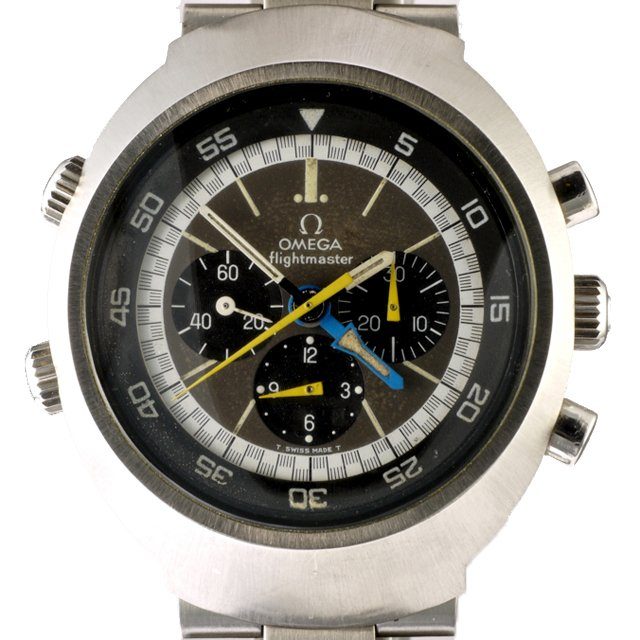
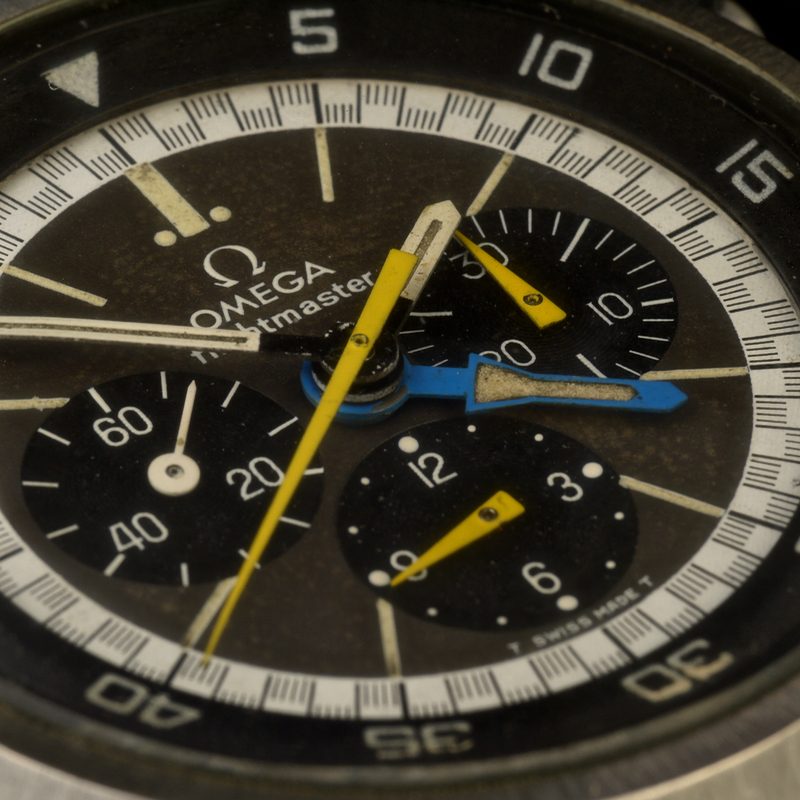
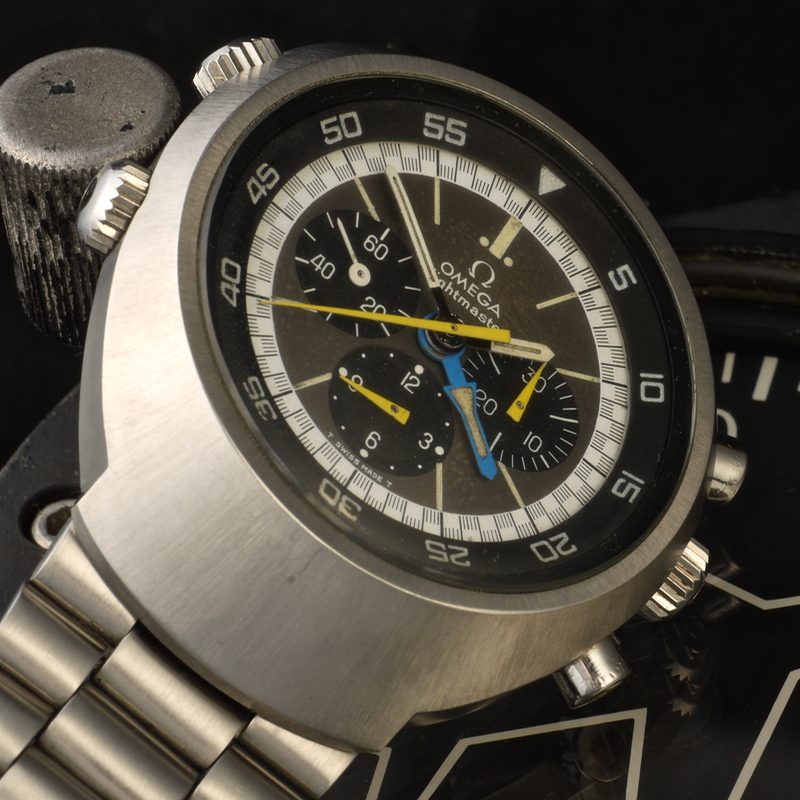
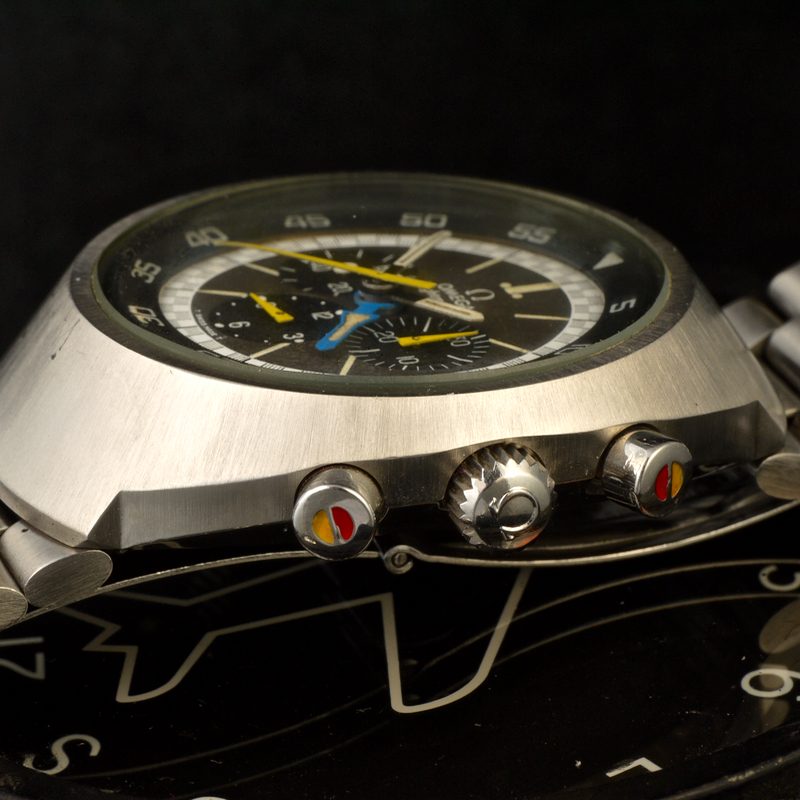
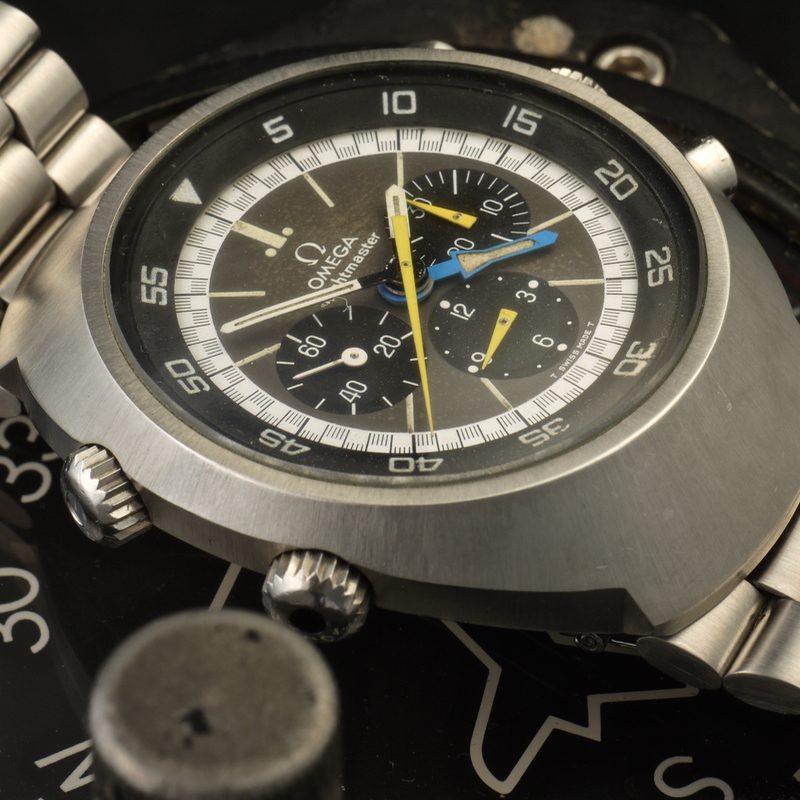
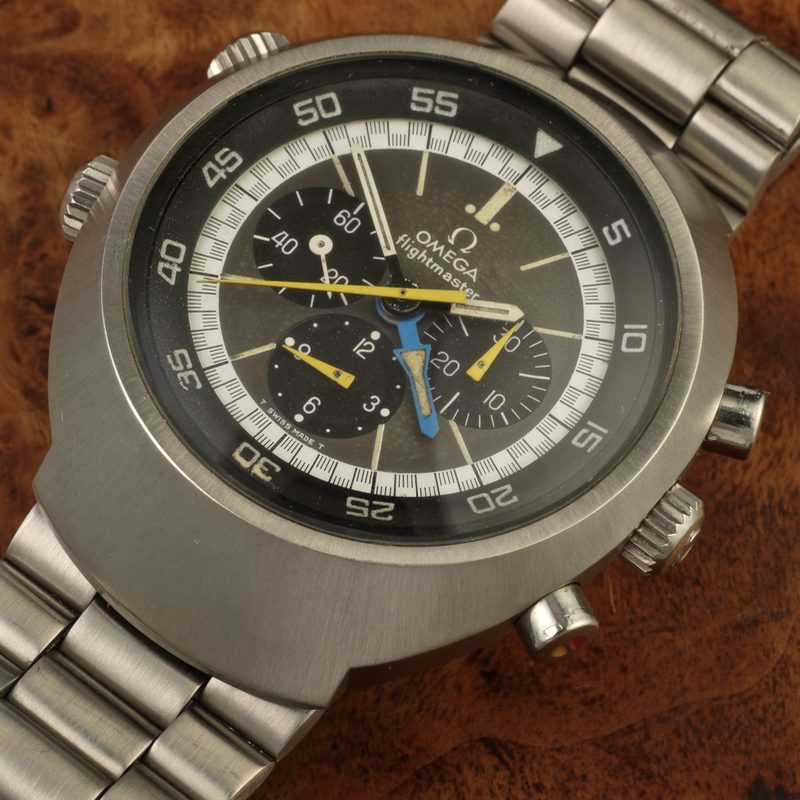
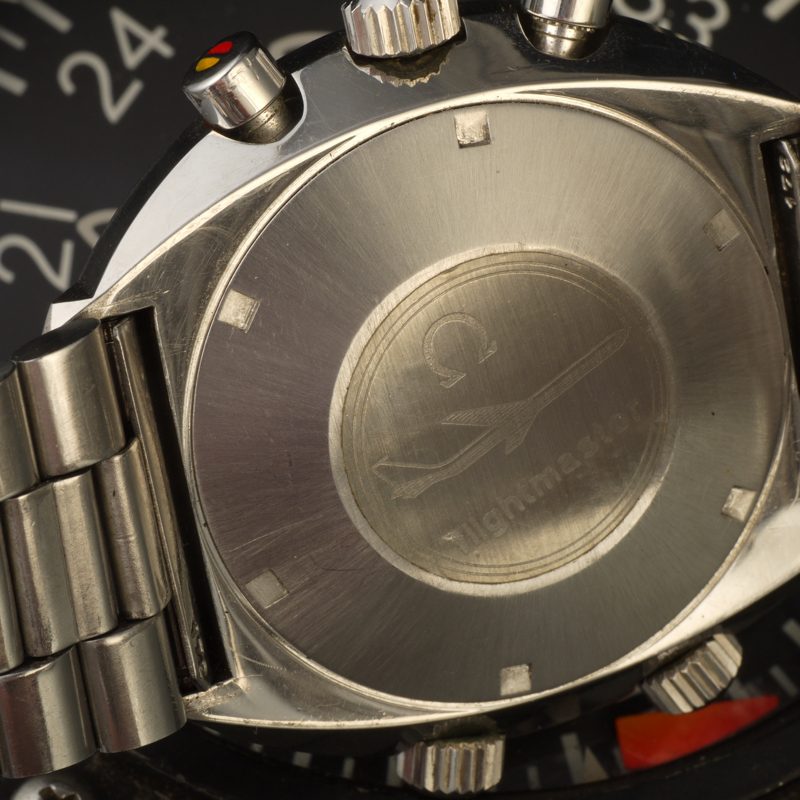
Omega Flightmaster 2nd Pilot
Intel introduces the microprocessor1971 Pilot version Omega Flightmaster second generation ref. ST 145.0026, beautiful patina dial, manual winding movement cal. 911, 52.8 x 43mm. case characterized by it is small seconds at 9 o’clock and by its anti-reflective and anti-abrasive flat tempered mineral crystal. Note the rare unpolished round case, usually the Flightmaster is Sun brushed radial polished.
Equipped with cadmium yellow chronograph hands which remains visible under the infrared lightning of a cockpit.
The Omega Flightmaster was a chronometer designed specifically for pilots and intercontinental travelers, featuring an additional blue hour hand for a second time zone. The watch features no fewer than 5 crowns/pushers and 7 hands but its extremely practical for navigation officers and pilots. Most of the Concorde British Airways crew members used to wear Omega Flightmasters.
The Flightmaster has a direct connection to spaceflight as well. Cosmonaut, Alexei Leonov wore a caliber 911 Flightmaster during training for the 1975 joint American-Soviet Apollo-Soyuz mission.
This unique chronograph series started in 1969 and was produced until around 1974 and was the first Omega to feature a chronograph GMT.
The movement is a modified version of the caliber 861 found in the Speedmaster. The manual-wind caliber cal. 911 was similar to the cal. 910, but had a small seconds hand at the 9 o’clock position in place of the 910s 24h hour sub-dial. Omega only used these calibers in the Flightmaster.
Omega was founded in 1848 by Louis Brandt at the age of 23. The brands reputation grew fast and in 1895 the watches achieved a precision of 30 seconds a day.
By the turn of the 19th century Omega was one of Switzerland’s largest watch companies with 240,000 watches produced annually and employing 800 people.
Omega made its debut in sports during the Gordon Bennett international ballooning Cup in 1917; since then Omega has gone on to be the official timekeeper at 21 Olympic Games.
In 1936 Omega set the remarkable World precision record of 97.8 points at the Kew-Teddington observatory in England.
In 1957, with motorsport in mind, Omega launched the Speedmaster, which in 1965 was chosen by NASA as its official chronometer in Space. Four years later the Moonwatch was the first watch to be worn on the Moon, when on 21st July 1969 Neil Armstrong made his giant leap for mankind. Currently Omega belongs to the Swatch Group.
